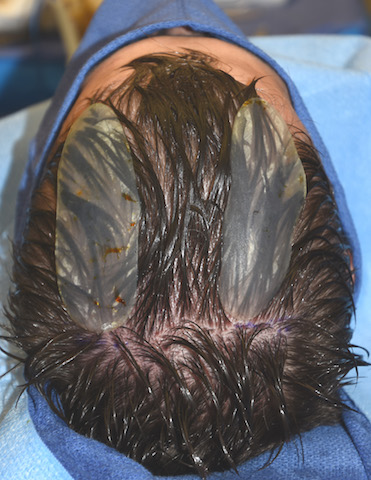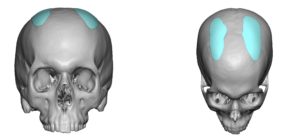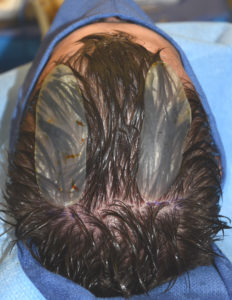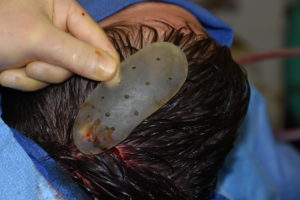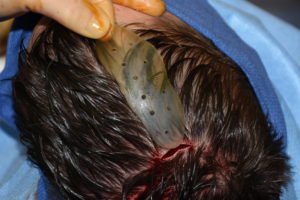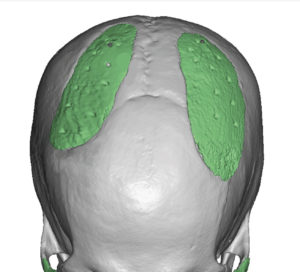Background: Despite its anatomic makeup of multiple bones, the shape of the skull is largely smooth with a convex contour over the its bony areas and minimal convexity or flatness at the sides. From an aesthetic standpoint the head or skull shape is viewed as five distinct units; forehead, top of head, back of head and the two sides of the head. Shape abnormalities may occur in any one of the regions or involve multiple regions concurrently. Such abnormalities may be excessive height or projection or concavities/depressions. But always the abnormality affects having a smooth surface with a symmetric shape.
Areas of skull flatness or depressions can be visible particularly in the individual who has short hair or a shaved head. While such depressions can occur anywhere on the skull surface a common area is that of the parasagittal region. As the name suggests this lies next to the midline sagittal suture line and extends out to the bony temporal line. It may exist as a depression between the two and extend beyond the bony temporal line into the upper temporal region. Parasagittal deficiencies can be erroneously interpreted as a high sagittal ridge skull deformity in many cases. And combinations exist in severe head shape abnormalities where it is both a combination of parasagittal depressions combined with a high sagittal ridge.
Isolated parasagittal skull deficiencies occur when the midline sagittal and lateral bony temporal lines have normal heights. As a result a discrete depression exists between them creating small indentations. Linear augmentations of them must be done to create an improved convex shape from the frontal view of the head.
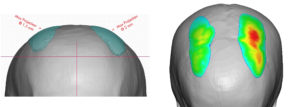
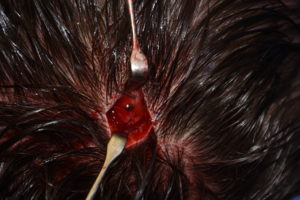
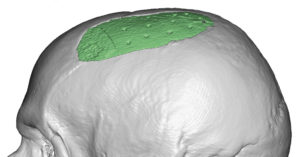
Isolated parasagittal skull depressions are discrete linear indentations that can be satisfactorily augmented in a short surgery with custom designed implants.
Case Highlights:
1) Discrete skull deformities are often areas of concavities or depressions that detract from making a rounder head shape.
2) Parasagittal skull depressions can occur between the midline sagittal ridge and the temporal bony line on the top of the head and may appear on just one side or both sides.
3) Bilateral parasagittal skull depressions can be treated by small thin custom skull implants which are inserted through very small scalp incisions.
Dr. Barry Eppley
Indianapolis, Indiana

